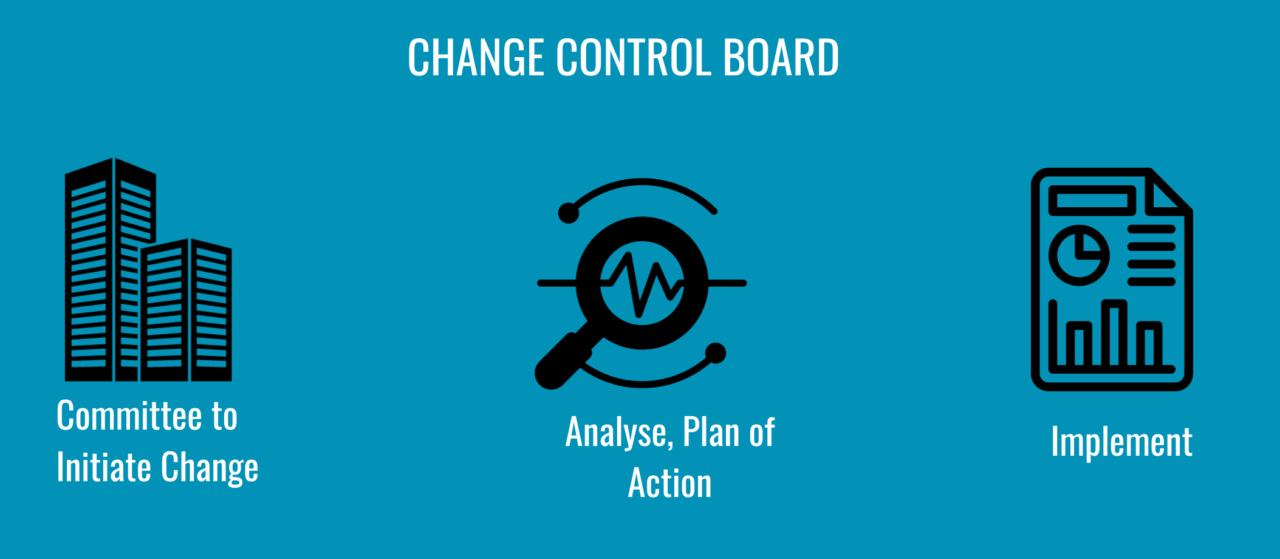Change Control Board Meaning
So let’s suppose you are a business owner and created a detailed financial plan for the year 2024. Everything was good until there was a change in the marketing policy of facebook. Which could severely affect the costs and results initially estimated. So, the best option was to adapt to these changes and that’s where you set up the change control board.

What is the need of Change Control Board?
By now you must already know that, the only thing constant in business is change. And good business’s know this and always try to adapt to changes constantly. Think about all those companies which were not able to change effectively. Let me site some examples to illustrate this;
- Blackberry and Nokia went out of business when they failed to adapt with android.
- Kodak went out of the photography business’s when they didn’t adapt to digital photography
Hence, the fate of companies that don’t take changes seriously have only one way they are going to end up. Which is down. Hence the need for change control board. Which is established to counter and adapt to the significant changes that happen suddenly.
Roles & Responsibilities under change control board?
Let me illustrate some of the functions and responsibilities as a part of the change control board.
- Evaluating risks and benefits of the changes which are proposed
- To decide on the changes, whether to approve or reject
- Act as the authorization body for the changes proposed
- To keep updated the changes which are proposed
Firstly, it is one thing to say that we have a change plan in place and totally different to actually implement the plan. For example; once a change is identified, the CCB might create a change in the SOP’s to implement the changes in the daily routine.
Types of Change Control Board
So now let me take you through some of the types of CCB in different kinds of organizational department.
Finance
A very common place where the finance department can be involved with CCB is. Let’s say ensuring that changes to the project doesn’t impact the budget negatively. While at the same time provide alternative funding options. Also this is important because the other departments might be interested in spending more on marketing or design. However, that additional cost can easily shoot up the budget.
Marketing
Now, imagine that there is a change in the market dynamics. And now marketing has to figure out how this will affect sales. For example; let’s say you are working with a tobacco company and goverement changes the regulations that you need to show health warnings on every packet vividly. So, this is where marketing change control board members will chip in their two cents.
Engineering
Just like marketing and finance the core product division also needs to come up with plans when such situations arise. For example; the outburst of electric vehicles and the increasing demand for it. This is where the engineering team chips in their plan of action to make sure that the change is effective and planned
Difference between Change Control Board Vs Advisory Committees
So, think of the change control board as a an immediate fire fighting team. Which is incorporated to to handle current sudden changes. Whereas an advisory committee is done for broader change in which the change control board might be a part of the puzzle.
Frequently Asked Questions
What is change control board?
Simply put change control board is a commmitte of members which may include managers, stakeholders, experts. Which is created to address a potential change which is identified by the company. And authorizing, planning and implementing the plan
Where is CCB’s used frequently?
So majorly CCB’s are commonly associated and used in project management. However it is not necessary that its only project management, it can be in IT, Quality, finance and marketing.
When does an organisation use CCB?
So generally speaking CCB should be used by companies when it faces sudden changes in the market.

